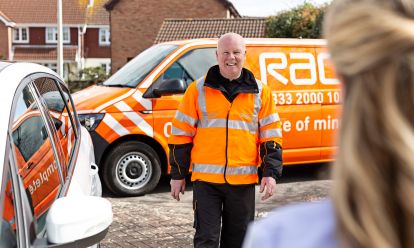
Breakdown cover from £5.29 a month for Standard cover*
• Cheaper than AA Price Promise or we’ll beat it by 20%^
• We get to most breakdowns in 60 mins or less
• Our patrols fix 4/5 breakdowns on the spot

The BYD Sealion 7 is the brand’s flagship SUV in the UK, and sets its targets directly at the Tesla Model Y. Can it compete? Lawrence Allan gets behind the wheel.
Things you'll like
- Long list of standard equipment
- High quality interior
- Spacious for occupants
Things to consider
- Rivals have longer battery range
- Ride and handling could be improved
- Some distracting tech and safety features
What is the BYD Sealion 7?
The Sealion 7 is the fifth model that Chinese manufacturing giant BYD has brought to the UK, and arguably one of its most important. It joins the brand’s other aquatically-linked models: the Dolphin small EV, the Seal electric saloon and the Seal U plug-in hybrid SUV.
If you’re familiar with your sea creatures it probably won’t surprise you to learn that the fully electric Sealion 7 is the largest BYD model, and the most expensive. Think of it as the Tesla Model Y in the range, sitting just above the Model 3-rivalling Seal.
And that’s where this car’s importance lies. For Tesla, the Model Y is now a bigger deal in terms of sales than the once-groundbreaking Model 3 – and it was the best-selling EV in the world in 2024. The Sealion 7 is clearly benchmarked against the Model Y in terms of size, pricing and tech.
And while BYD holds the title of the world’s biggest seller of what it calls ‘New Energy Vehicles’ (EVs and plug-in hybrids to you and I) the Sealion 7 could well become the car that takes the Model Y’s crown. But, and most importantly, is it any good? Our in-depth BYD Sealion 7 review puts it all into context.
Verdict: is the BYD Sealion 7 a good car?
Overall, we reckon the Sealion 7 is a decent effort from BYD that shows plenty of promise. You get a lot of equipment, luxury and space for your money, plus a long warranty to put you at ease. There’s no shortage of performance, either, but we hoped for better range and efficiency, while the overall driving experience isn’t as polished as similarly priced rivals. With some tech and mechanical updates, the Sealion 7 could be very compelling.
Pricing, specs & rivals
Although BYD has much more expensive models across its sub-brands in China, the Sealion 7 is the priciest model to come to the UK so far. The price increase over the Seal saloon reflects this, but it’s only slight.
The Sealion 7 range kicks off with Comfort trim, priced from £46,990. That’s solely available with the 312hp single motor power option, and it’s around £1,300 more than the base Seal and £2,000 more than the cheapest Tesla Model Y.
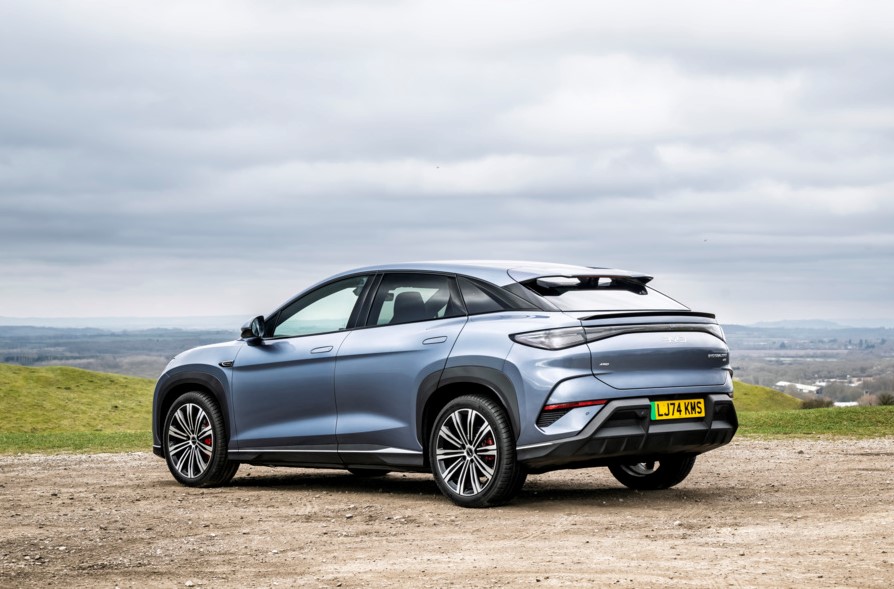
The Design AWD model starts at £51,990 – a fair increase given it also brings dual electric motors and considerably more power, though the equipment list doesn’t change a great deal.
Topping the range is the Excellence AWD, which does add some key kit upgrades, plus a larger battery boosting the range capability, but pushes the price up a good chunk to £58,990.
Whichever model you opt for, though, the standard equipment tally is vast. All versions get the full suite of infotainment, a 12 speaker Dynaudio sound system, a 360-degree parking camera, electrically adjustable front seats with heating and ventilation, heated rear seats, adaptive cruise control, vehicle to load tech and much more. Design AWD only upgrades the wheel size from 19 to 20 inches.
It means that upgrades for the flagship Excellence model aren’t that extensive. Faux leather upholstery becomes real Nappa leather and a head-up display is added, but that’s about it.
One key point for those concerned about BYD being less established in the UK than other carmakers is the six-year, 93,000-mile warranty, which rivals Kia and Hyundai. That, along with a more typical eight-year battery warranty, should give you and any future owners more peace-of-mind
Rivals
It’s abundantly clear that BYD has the Tesla Model Y in its sights with the Sealion 7 – no surprise, when the Tesla is such a huge global seller. But there’s plenty of other competition from cars like the Kia EV6, Skoda Enyaq Coupe, Volkswagen ID.5, Ford Capri, Peugeot 3008, Nissan Ariya and Renault Scenic E-Tech.
Don’t forget premium offerings such as the Genesis GV60 and Audi Q6 e-tron, too, while other Chinese competitors like the Xpeng G6 shouldn’t be ignored either.
BYD Sealion 7: Interior comfort, quality & technology
Take a quick glance at the Sealion 7’s interior design, with its dominating centre screen and prominent device charging area, and you’ll see shades of Tesla. But this fades quickly as BYD’s more upmarket approach is clear.
The dash design, with its elaborate connection to the doors and ornate light pattern panel in front of the passenger, gives off a far more luxurious vibe than the Model Y or EV6. And the quality generally impresses, too, with plush leather-like finishes all around the doors, dash and centre console, metallic switchgear and cossetting seats.
Sure, with black the only available upholstery option it’s a lot more subdued than some of BYD’s bolder efforts, but overall it’s a nice place to spend time. And comfortable, too, with sculpted seats that have plenty of electric adjustment and lumbar support.
The driving position is higher than many alternatives but feels natural with the car’s tall waistline, giving it a commanding, big SUV feel that’ll appeal to many. Having said that, the steering wheel sits at a slightly unusual angle, pointing upwards rather than directly towards your chest.
Forward visibility is good, but the sloping back window gives you a shallow view out the back. This makes the standard-fit 360-degree camera all the more important when parking.
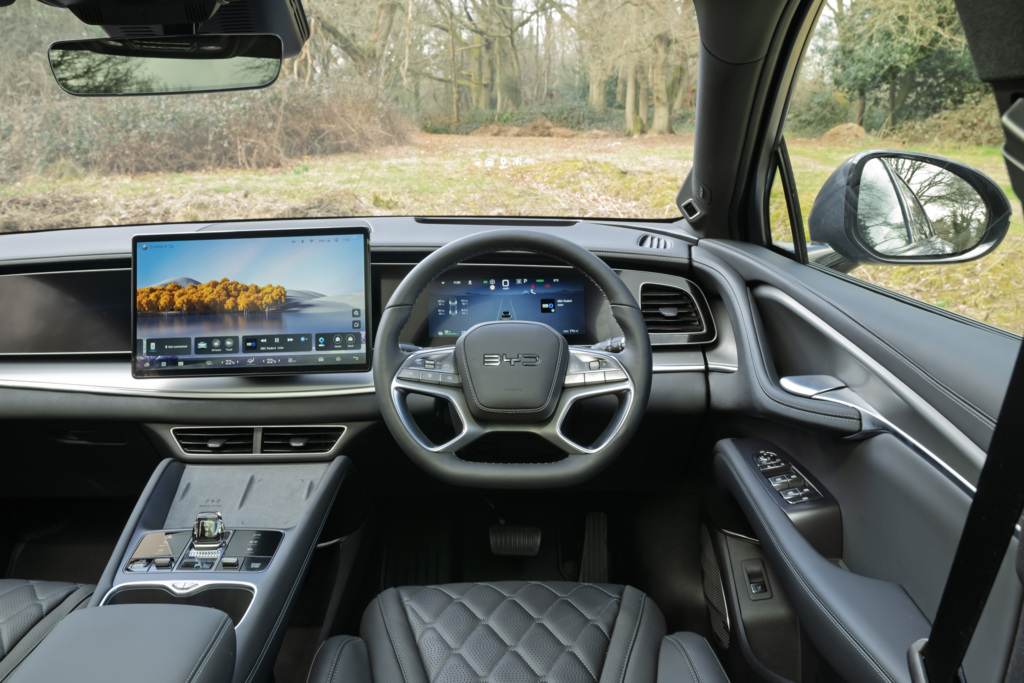
Infotainment, sat-nav, stereo and connectivity
BYD’s trademark feature – the massive 15.6-inch electrically rotating touchscreen – is of course present and correct in the Sealion 7. The ability to shift from portrait to landscape mode at the touch of a button or via voice command is a nice party trick, if not the most useful feature in reality.
Still, the screen itself is Tesla-like in its quick responses and bright graphics, plus there are plenty of features built-in. There are some ergonomic foibles, however – the touch-only climate controls are fiddly to use on the move (and the three-finger swipe shortcut to change temperature doesn’t always work that well) while some of the icons and menus are confusing and difficult to operate without familiarity.
You also get wireless Apple CarPlay and Android Auto as standard, but another gripe is that it completely takes over the screen when you have either activated – you’ll need to exit to operate any of the car’s functions. Put simply, some more physical shortcut buttons and better software co-ordination wouldn’t go amiss.
You do get a bright 10.25-inch digital driver’s display, however, and a head-up display in Excellence trim – neither features are even available as an option in the Tesla Model Y. We also love the big wireless phone charging pad, which will charge two devices at ultra-fast 50-watt power and has an in-built cooling fan to stop those devices from overheating.
On top of that you get BYD’s comprehensive voice control system, a WiFi hotspot, BYD’s smartphone app and both front and rear USB-C ports of varying power output. What’s more, the punchy 12 speaker Dynaudio sound system delivers better quality than most standard-fit in-car systems.
How practical is the BYD Sealion 7?
The Sealion 7 is no shrinking violet when it comes to its dimensions. At 4,830mm long, 2189mm wide (including mirrors) and 1620mm tall it’s larger than the Model Y in every dimension bar height.
That translates, unsurprisingly, to generous occupant space. There’s loads of room up front for taller or broader adults, plus seats that adjust a long way back and plenty of width to avoid banging elbows with your front seat passenger.
Things are even rosier in the back, where you’ll find a truly vast amount of kneeroom and plenty of space for your feet. Don’t expect any complaints even from those well over six-foot, even if headroom isn’t quite as generous thanks to that sloping roofline. While a Model Y isn’t far off for space, the Sealion 7 has much more comfortable and supportive seats in the front and back.
There’s easily enough room for three adults across the back, too, thanks to good width and a flat floor. You can also recline the rear seatbacks quite a way to juggle rear seat comfort and boot length. Overall, the Sealion 7 is impressively accommodating.
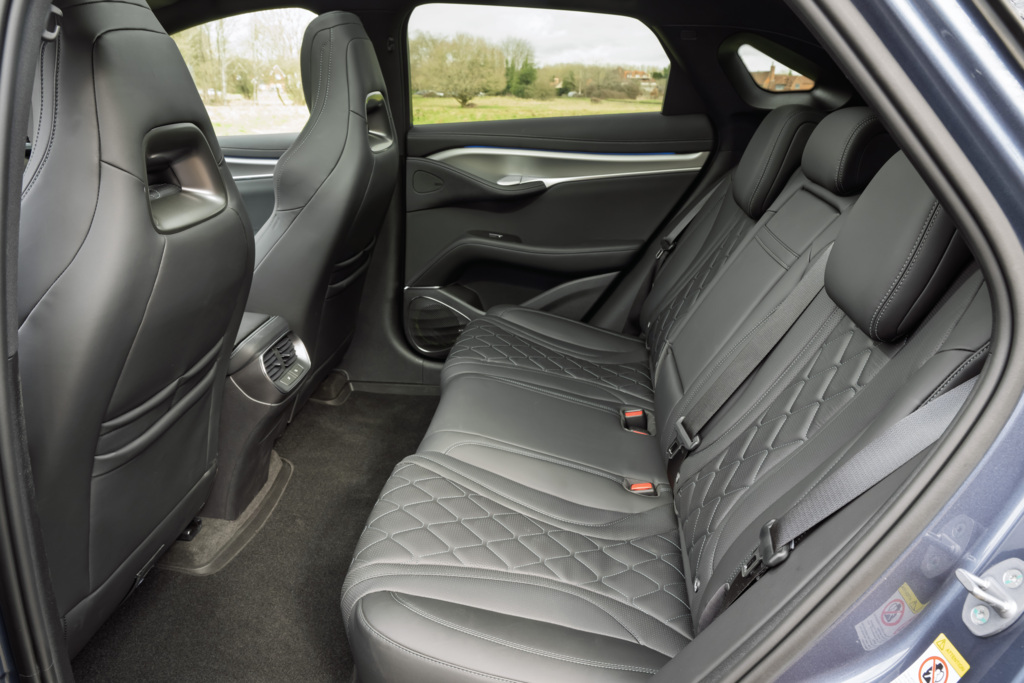
Storage and boot space
Alongside generous cabin space, you’re very well catered for when it comes to storage in the Sealion 7. Up front you have a very deep cubby under the centre armrest, an even larger tray underneath the centre console itself, neat adjustable height cupholders and a vast two-phone wireless charging tray.
Further to that you’ll find decent-sized door bins and a pretty large glovebox, too. The door bins in the back are surprisingly roomy, too, while you’ll also find a smaller cubby in each door pull, some cupholders and another little cubby in the centre armrest and a total of six pockets in the front seatbacks (two smaller ones on each seat for devices).
And that’s before we’ve even considered the boot. At 520 litres it’s a competitive size, ahead of the Kia EV6 but a little behind the Tesla Model Y. The opening itself isn’t the widest or tallest, but it’s well-shaped and you get a standard height adjustable boot floor – albeit one that only moves a few centimetres.
Still, the underfloor storage well is deep and you get an electric tailgate across the range. You also get a chunky 58-litre front boot under the bonnet, too. The rear seats fold in a 60/40 split rather than the more versatile 40/20/40 split seen in some rivals, though, and we’d like to see some levers in the boot to make folding them down easier.
Performance & drive: What is the BYD Sealion 7 like on the road?
You’re unlikely to want for performance with any Sealion 7, although with Tesla setting the acceleration standard we can see why you spend more for dual-motor variants.
Nevertheless, the base Comfort model is no slouch, putting 312hp to the rear wheels only and managing a 0-62mph time of 6.7 seconds. That’s far faster than any Scenic E-Tech and quicker than base versions of the Kia EV6 and Hyundai IONIQ 5, but some way short of the 5.6 second sprint the entry-level Model Y manages.
Realistically, though, there aren’t many situations in the UK where the Comfort-spec Sealion 7 feels wanting for acceleration, with the possible exception of a tricky overtake you probably shouldn’t be attempting anyway.
If sports car levels of pace are essential to you, though, then the dual motor models should deliver. The second motor brings the output up to 530hp and delivers the sort of acceleration that borders on unsettling if you haven’t warned your passengers.
For those used to fast EVs, though, it’s still some way off the mind-blowing pace of a Tesla Model Y Performance or Hyundai IONIQ 5 N, however. A slightly dull throttle response is partly to blame, although this has the benefit of making the Sealion 7 easier to drive smoothly around town.
Two levels of regenerative braking are offered via a toggle switch on the centre console. This makes it less easily adjustable than some rivals with wheel-mounted paddles, but it’s better than having to dive into the touchscreen. The Model Y, for example, doesn’t offer any regen adjustment. Braking the old-fashioned way reveals a slightly grabby pedal in the BYD, however.
Power, 0-62mph times
- BYD Sealion 7 Comfort: 213hp / 6.7 secs
- BYD Sealion 7 Design/Excellence AWD: 530hp / 4.5 secs
Ride and handling
Despite BYD billing the Sealion 7 as a ‘performance SUV’ the suspension is merely adequate when it comes to ride and handling. It’s certainly more composed than the cheaper Atto 3 but is found wanting next to the best EV rivals.
The suspension is quite soft, meaning the Sealion 7 deals with low-speed urban potholes better than a Tesla Model Y. The trade-off, though, is a fair bit of body lean when you hit a series of bends, while the steering feels too light and remote to transmit any sense of connection to the road. The traction control is quite heavy-handed, too.
Put simply, there’s more fun to be found in rivals like the Kia EV6 or Ford Capri, and even the Model Y. But while comfort is better than the latter, the BYD still isn’t as smooth as we’d like out of town, feeling unsettled over poor surfaces and still fidgeting a little on the motorway. It’s a shame, because as it stands the Sealion 7 doesn’t quite feel like it’s been tuned with UK roads in mind.
Noise and refinement
The Sealion 7 is a smooth and quiet car to travel distances in. Part of that comes from the standard-fit double-glazed side windows that do a commendable job of keeping wind noise to a minimum, while road noise is also barely noticeable on most surfaces. It’s considerably quieter than a Tesla Model Y as a result.
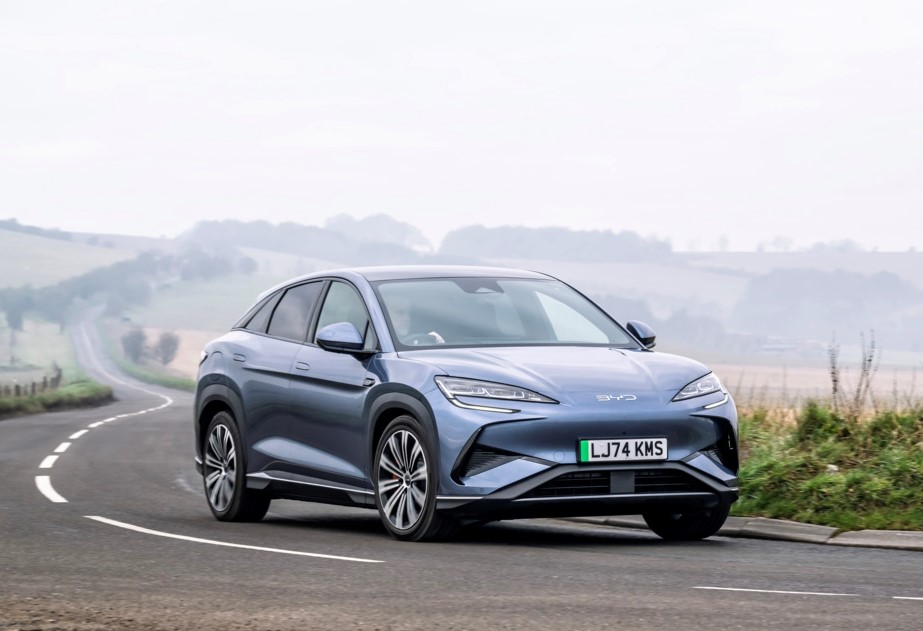
Euro NCAP: is the BYD Sealion 7 a safe car?
At the time of writing (April 2025) the Sealion 7 hasn’t been put through its crash test paces by Euro NCAP. However, given every BYD that’s come to the UK has easily achieved the maximum five-star rating, we’d expect the same for the new model.
There’s certainly no shortage of safety equipment on every Sealion 7. Alongside seven airbags, all versions get the same driver assist tech including autonomous emergency braking, lane keep assist, driver fatigue monitoring, traffic sign recognition and both front and rear cross-traffic alert/auto-braking.
Also standard is blind spot detection, a safe exit alert system and adaptive cruise control – some rivals make you move up the range or plunge into the options list for many of these features.
That’s all well and good, but some of the features are intrusive – the default lane assist, for example, is one of the most over-the-top systems we’ve tried, constantly interfering with your chosen line. Turning it off could be easier, too.
Charging, range and running costs
BYD continues to shout loudly about its ‘Blade’ EV battery technology, where the cells are arranged in thin, razor blade-like structures and use LFP (Lithium Ion Phosphate) chemistry.
LFP means no expensive, tricky to source cobalt or nickel in the cells, along with higher resistance to temperature increase and less risk to long-term battery health from repeated rapid/empty-to-full charging than traditional lithium-ion batteries.
Meanwhile, the Blade structure is again said to improve cooling and strength enough to withstand BYD’s gruelling ‘Nail Penetration Test’ – where nails are driven with force into the cells to simulate a serious crash.
All of that is great, but what it doesn’t translate to is a particularly spectacular range. LFP batteries tend to be less energy dense, so while the Sealion 7’s smallest battery pack is a chunky 82.5kWh it only manages an unremarkable 300 miles on a charge in WLTP testing.
That’s in the single-motor Comfort form, whereas the Design AWD model drops the official figure to 283 miles – a decent trade-off for dual motors and far more performance.
Option for Excellence AWD raises the battery sizes to a chunky 91.3kWh. That boosts the range to a claimed 312 miles.
While a Tesla Model Y manages a comparable 311 miles in standard range form, all Sealion 7s are a long way off the 387 miles of the Long Range model. The BYD is also well behind the longest-range options from Ford, Renault, VW, Peugeot, Audi, Kia and Hyundai to name a few.
It’s a shame, because while the figures the BYD manages will be perfectly acceptable for the average journey profiles of most drivers, we’d still expect the luxury of a generous range for the money. It’s also disappointing that BYD hasn’t made any range advances over the now three-year-old Seal.
Still, a standard-fit heat pump means you’re likely to retain more range capability in cold weather than rivals that don’t have one.
Range on a charge (WLTP figures)
- BYD Sealion 7 Comfort: 300 miles
- BYD Sealon 7 Design AWD: 283 miles
- BYD Sealion 7 Excellence AWD: 312 miles
Like the Sealion 7’s range capability, its charging speed potential is respectable but doesn’t set any standards – at least with the smaller of the two batteries.
Using a suitable DC rapid charger, models with the 82.5kWh battery are capable of 150kW, translating to a 10-80% charge in around 32 minutes. By comparison, a Model Y RWD manages the same charge in about 24 minutes, and a Kia EV6 in an impressive 16 minutes.
Things are more competitive with the Excellence AWD’s 91.3kWh battery. That can be recharged at speeds of up to 230kW, bringing the 10-80% charge time down to around 24 minutes. That’s faster than a Model Y Long Range, although the Tesla offers more range to begin with.
All Sealion 7s offer 11kW AC charging. 22kW charging is offered on some rivals and would be a desirable option, but it’s not essential for everyone. The big battery sizes do mean an awfully long wait if you’re restricted to 7kW, though.
We do like that Vehicle-to-Load tech is standard on every Sealion 7, allowing you to power devices or appliances from the car’s battery.
Charging speeds
(Figures from EV Database)
- 7kW charging: 13hrs 15mins (82.5kWh battery) / 14hrs 30 mins (91.3kWh battery)
- 11kW charging: 9hrs / 9hrs 45 mins
- 50kW rapid charger (10 to 80% charge): 73 mins / 81 mins
- 150kW+ rapid charger (10 to 80% charge): 32 mins/ 24 mins
How much does the BYD Sealion 7 cost to insure?
BYD’s high-end electric cars tend to command quite high insurance premiums, much like Tesla, and the Sealion 7 is no different. Even the entry-level Comfort model sits in insurance group 45, while Design is in group 47 and Excellence sits in group 49.
That’s fractionally lower than the Seal saloon and on a par with the Tesla Model Y and Audi Q6 e-tron, but rivals from Kia, Hyundai and VW should be cheaper to insure.
BYD Sealion 7 FAQs
Is the BYD Sealion 7 coming to the UK?
Yes, the BYD Sealion 7 is coming to the UK and has recently been launched to British media. It’s available to order now, and customer deliveries are expected to begin in May.
What is the price of the BYD Sealion 7?
UK prices for the BYD Sealion 7 start at £46,990 for the entry-level Comfort model. The Design AWD variant is £51,990, with the range-topping Excellent AWD model costing £58,990.
Who owns BYD?
BYD is a large multinational China-based conglomerate owned by founded Wang Chuanfu, along with prominent investors such as Berkshire Hathaway. BYD Auto is its biggest subsidiary, but BYD Electronics is a major component supplier for Apple and also assembles millions of mobile phones.







